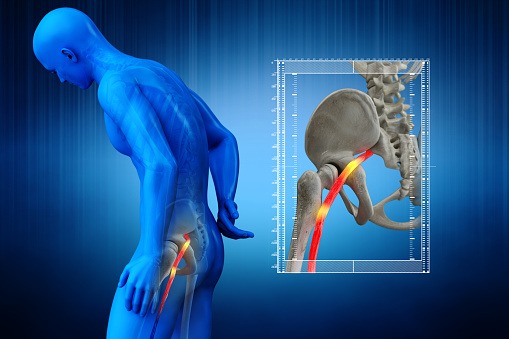You may be frustrated by the pain in your hip or leg, and that’s understandable. You might think this pain is all in your head, but it could be a sign of something serious. To determine the cause of your pain, you should first see a doctor.

Table of Contents
Possible causes
Here are some causes for painful hip or leg pain that may be severe enough to warrant surgery:
- hip or leg fractures;
- hip dislocation;
- femur fracture at the neck and pinched sciatic nerve between the head of femur and acetabulum;
- osteoarthritis can lead to chondromalacia patella;
- bursitis, arthritis, or tendonitis of the hip;
- hemivertebrae (a condition where half of a vertebra in the spine does not form);
- peripheral nerve injuries;
- stenosis or narrowing of a bony canal in the hip joint (glenohumeral);
- idiopathic osteoarthritis – it can develop in young people who are not yet adults;
- joint or prosthetic pain in the hip when using a joint resurfacing device (joint replacement).
Diagnosing
The first step is to determine the cause of your pain so that your doctor can help you feel better.
If you have pain in your hips or legs, see your doctor. They will take an X-ray to determine whether you have a fracture or dislocation. This is very important because when bones are fractured or dislocated, they should be put back into place as soon as possible to limit the amount of damage they cause elsewhere in your body.
On an X-ray, you can see something called a “fistula” that is a small break in your bone. A fistula can be a sign of trauma or a fracture, but there are also other causes.
Types of surgeries
There exist different types of surgeries for hip and leg pain:
Hip fracture surgery
It involves the placement of a pin or a metal rod in the thigh bone. This is done to stabilize the leg.
Total hip replacement
Suppose the head of your femur (the ball part of the ball and socket joint between your thigh bone and hip) is damaged due to a fracture or osteoarthritis. In that case, it may be replaced by a metal prosthesis (a metal ball coated with plastic) or ceramic material, which are designed to allow your bone cells to grow onto them much like natural bone.
Femoral neck fracture and surgery
Some femur fractures (the ball part of the ball and socket joint between your thigh bone and hip) are near the head, which can lead to a pinching sensation in your lower stomach. In this case, it may be necessary to have surgery to release nerves and muscles around the chest bone.
Pincer or pin-type fracture of the hip
May need a procedure called an open reduction and fusing.
An arthroscopy
The doctor needs to see the back part of your hip where the ball and socket joint is located. It’s kind of a nerve-routing procedure and does not involve surgery.
Hernia repair
Suppose you have pain on the outside of your upper thigh (the quadriceps femoris muscle). This may be accompanied by pinching the nerves between the bone and muscle in your upper leg, which can be very painful.
Hip dislocation
If your hip is moved out of position, it may require replacement with an artificial hip joint.
Total knee replacement (partial or complete)
It is done when you have knee pain due to osteoarthritis or traumatic injury. The knee joint is located where the end of your thigh bone meets the top of your shin bone (tibia).
Cervical spine fusion, or C2-C7 fusion
If you have neck, arms, and hands pain due to spinal stenosis or scoliosis, cervical spine fusion will be necessary.
Tops spinal surgery, using microsurgery
This is a type of surgery where a highly trained surgeon takes out the diseased or damaged bone in a person’s back. The bone that gets removed from your spine in TOPS spinal surgery will be replaced with healthy vertebrae, said to be made of plastic and designed to take on the shape and function of the original ones in your spine. After undergoing this type of surgery, people may experience some pain during the first year after the operation. This process is often used to treat back pain.
Anatomical changes due to aging
The hip joint is made up of three types of bones:
- the femur (thighbone);
- the patella (kneecap);
- the acetabulum (hip socket).
As a person ages, the bone structure of your hip begins to change. The hip changes because of weakened bone density and decreased joint function. These changes can cause inflammation of the sac between the hipbone and the pelvis. They can also lead to arthritis, which is usually treated with medication or, in some cases, with surgery.
Prevention
There are many ways to prevent hip pain due to injury or disease. These include:
- maintain your fitness level;
- make sure your bones are correctly stabilized so that you don’t injure yourself;
- maintain good posture and balance to prevent falls;
- avoid activities that put more pressure on your hips than usual;
- be careful when you lift heavy objects and avoid repetitive motions in work or sports activities;
- if you have osteoporosis, have your bones checked regularly to make sure they are healthy;
- use a spine pillow or support pillow when sleeping to help keep your spine aligned;
- make sure that you stretch your hip muscles regularly and continue daily exercises;
- discuss any problems with your doctor and seek treatment as soon as possible if you develop any of the above symptoms;
Conclusion
Some conditions can cause hip pain. It is essential to get treatment of the first signs to prevent them from getting worse. It is best if you can catch these problems early before they become more challenging to deal with. Please remember that if you feel any of the above symptoms and need treatment, then get a second opinion from a doctor who is an expert in this field.

